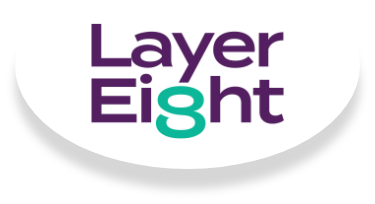In the ever-expanding realm of the internet, where we spend a significant portion of our daily lives, choosing a secure web browser is paramount. The multitude of options available can be overwhelming, and determining which browser offers the highest level of safety can be a challenging task. In this comprehensive exploration, we will dissect the security features of some of the most popular web browsers – Google Chrome, Mozilla Firefox, Microsoft Edge, and others. By examining built-in security features, update practices, privacy settings, and their effectiveness against common online threats like phishing and malware, we aim to empower you to make an informed decision about your online safety.
Google Chrome: The Security Pioneer
Google Chrome, developed by tech giant Google, is renowned for its speed and user-friendly interface. But what about security? Google Chrome has a robust security infrastructure that includes automatic updates, sandboxing, and Safe Browsing technology. One of Chrome’s standout features is its automatic update mechanism. Unlike some browsers that may rely on manual updates, Chrome seamlessly updates in the background. This ensures that users are protected with the latest security patches without requiring their active involvement. Additionally, Chrome employs sandboxing technology. Each open tab operates in its isolated environment, preventing malicious code from spreading across tabs. This containment strategy is a crucial line of defense against potential threats. Google’s Safe Browsing technology is another layer of security in Chrome. It warns users about potentially harmful websites and blocks access to phishing and malware-infected pages, enhancing the overall safety of your browsing experience.
Mozilla Firefox: Open Source Security
Mozilla Firefox, an open-source browser known for its commitment to user privacy, has made significant strides in enhancing its security features. Firefox offers automatic updates, a powerful privacy mode, and an extensive range of add-ons for additional security measures. Automatic updates in Firefox ensure that users are always running the latest version with up-to-date security patches. This proactive approach helps in closing potential vulnerabilities and fortifying the browser against emerging threats. Firefox’s privacy-focused mode, known as Enhanced Tracking Protection, blocks third-party trackers and cookies that could compromise your privacy. This feature is particularly valuable for users who prioritize online anonymity. The extensive library of add-ons allows users to customize their security settings further. From ad blockers to script blockers, Firefox empowers users to tailor their browsing experience to align with their security preferences.
Microsoft Edge: Reinventing Security
Microsoft Edge, the successor to Internet Explorer, has undergone a transformation with a new Chromium-based engine. This change has brought a significant improvement in terms of security. Edge boasts features like Microsoft Defender SmartScreen and Application Guard, providing robust protection against phishing and malware. Microsoft Defender SmartScreen is a reputation-based system that identifies and blocks malicious websites. It also protects against phishing attempts, helping users avoid potentially harmful content. Application Guard in Microsoft Edge takes security to the next level by isolating potentially dangerous content within a container. Even if a malicious site is accessed, it is confined to this isolated environment, preventing it from affecting the rest of the system. Edge’s integration with Microsoft Defender, the company’s comprehensive security suite, further enhances its overall security posture.
Other Contenders: Safari, Opera, and Brave
Safari, Apple’s default browser, has earned its place in the security discussion. It benefits from the security measures implemented in the broader Apple ecosystem. Safari focuses on user privacy by blocking third-party trackers and offering an intelligent anti-fingerprinting feature. Opera, known for its innovative features, also pays attention to security. It includes a built-in ad blocker and a free VPN, contributing to a safer browsing experience. However, users should remain cautious and aware of privacy concerns related to free VPN services. Brave, a privacy-centric browser, takes a unique approach by blocking ads and trackers by default. It aims to provide a faster and more secure browsing experience. However, users may need to adjust to a different model of online advertising and consider potential trade-offs.
Privacy Settings: A Crucial Aspect
Regardless of the chosen browser, understanding and configuring privacy settings is pivotal for a secure online experience. Browsers often come with various privacy-related options, such as controlling cookies, managing site permissions, and enabling Do Not Track requests. Users should familiarize themselves with these settings and tailor them to suit their privacy preferences. In the quest for the safest web browser, the landscape is rich with options, each offering unique features and security measures. Google Chrome, Mozilla Firefox, Microsoft Edge, and other contenders like Safari, Opera, and Brave have their strengths and considerations. Ultimately, the choice depends on individual priorities, preferences, and specific security needs. It is crucial to stay informed about the latest security developments and updates for the chosen browser to maintain a secure online environment. By understanding the security features discussed in this blog, users can make an educated decision, allowing them to browse the internet confidently and safely.

